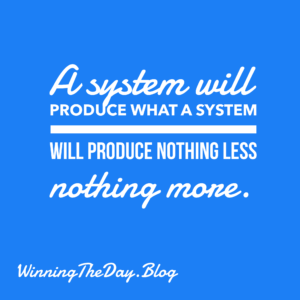Let’s get real for a second.
You know that feeling, right? You’re in the thick of it – whatever “it” is for you right now. Maybe it’s a tough project at work, a challenging personal goal, a difficult family situation, or even just a really rough patch in your training. It feels endless. Brutal. You’re tired, maybe even in pain, and that little voice in your head starts screaming, “This will never end. I can’t do this. I need to quit.”
Sound familiar? We’ve all been there. Staring down something that feels absolutely insurmountable.
But here’s the truth, and this is a sentiment powerfully echoed by Spartan founder Joe De Sena:
Nothing stays hard forever.
Think about it. That stress at work? It will eventually ease. That difficult conversation you’re dreading? It will happen, and then it will be over. That feeling of being completely overwhelmed? It doesn’t last. Life has its ebbs and flows, and those tough times, those storms, always pass.
You know that image, right? The one of the person digging through a tunnel, just inches away from breaking through to the light, and they give up? Joe De Sena often talks about this – that’s where so many of us falter. Right there, on the verge of a breakthrough.
Trust me, I’ve been that person in different ways throughout my life. We all have those moments where we feel like we’ve hit our limit. And speaking from personal experience, having crossed the finish line of eight Spartan races myself – including the grueling Beast – I can tell you firsthand that those moments of wanting to quit are real, and they are intense.
I remember during one particularly brutal stretch of the Beast, slogging through mud, muscles screaming, the next obstacle feeling miles away, that voice was practically a roar. But what got me through, what gets any of us through those seemingly impossible challenges, is the understanding that those moments don’t last.
I remember when I first started pushing my physical boundaries. Every new distance felt impossible. But what I learned was the power of just focusing on the next small step. Instead of dwelling on the miles ahead, I’d tell myself, “Just make it to that next lamppost. That’s the goal.” And then the next. And the next. This idea of breaking down the impossible into manageable chunks is something Joe De Sena champions – focusing on the immediate effort rather than being overwhelmed by the enormity of the task.
And what I discovered was that those “finish lines” I kept creating for myself? They were arbitrary. My actual capacity was always greater than what I initially believed. As Joe often says, we are capable of so much more than we think. Those eight Spartan races, each one a testament to pushing beyond perceived limits, have solidified that truth for me.
Here’s something I’ve come to understand, a principle that resonates deeply with Joe De Sena’s philosophy:
Wherever you mentally draw the line is often where you’ll stop.
And this brings me to something I’ve been thinking about lately, something a lot of us grapple with: what happens after you conquer a big challenge? You pour everything into reaching a major goal – maybe it’s finishing a marathon, launching a business, or overcoming a significant personal hurdle. You cross that finish line, and there’s this incredible sense of accomplishment. But then… what?
Sometimes, that feeling of triumph can be followed by a bit of a letdown. The intense focus and drive that propelled you forward can suddenly feel… absent. It’s like you’ve emptied the tank, and the idea of filling it up again for something new feels daunting. You might find yourself struggling to regain momentum, wondering how to transition that energy into the next big thing.
This is a question I see echoed in the spirit of Joe De Sena’s “You Ask, Joe Answers” – how do you keep pushing, keep striving, after achieving something significant? The key, I’ve learned, and this aligns with Joe’s direct and action-oriented advice, isn’t to wait for some grand wave of motivation to wash over you. That feeling might not come right away. Instead, it’s about taking that initial, sometimes uncomfortable, step. Think of it like this: you’ve just completed a long, hard climb. You might be tired, but the view from the top is amazing. To see the next vista, you don’t need to immediately sprint up another mountain.
You just need to start walking in that direction.
Pick one small action, something manageable, that nudges you towards your next goal. It doesn’t have to be monumental. It could be a phone call, some research, a single workout.
The act of starting, even in a small way, creates its own momentum.
It reminds your mind and body that you’re still in motion, still capable. As Joe De Sena often says, “Just start.” Don’t overthink it, just initiate.
So, if there’s one thing I want you to take away from this today, inspired by the relentless spirit of Joe De Sena and my own experiences on the Spartan racecourse:
- Tell yourself the story you need to hear to keep going. The struggle will end. Sometimes, you need to give yourself a little mental nudge, a little lie even, to push through that immediate discomfort. Focus on the eventual relief, the feeling of accomplishment.
- Embrace the tough parts. Yes, they suck while you’re in them. They’re the parts we naturally want to avoid. But here’s the secret, a core tenet of the Spartan mindset: those hard times? They’re where the real growth happens. They forge resilience and reveal strength you didn’t know you had. Trust me, I’ve seen it firsthand, both in myself and in countless others on those grueling courses.
- Believe in your deeper strength. We are all far more capable than we often give ourselves credit for. You have reserves of strength, both mental and physical, that you can tap into when things get tough. And when you reach a big goal, don’t let that be the end of the story. Use that accomplishment as fuel to ignite the next chapter, one intentional step at a time – a philosophy championed by Joe De Sena himself, and one I’ve lived through, mud, sweat, and burpees included.
So, what’s that one hard thing you’re facing right now? What’s that next small step you can take, even if you don’t feel fully “ready”? Remember, you’ve got this.
Here’s to embracing the challenges, because that’s where we truly discover what we’re made of, and here’s to finding that next path forward, one intentional step at a time – a lesson I’ve learned time and again, not just from Joe De Sena, but from the grit and camaraderie of the Spartan race community.






